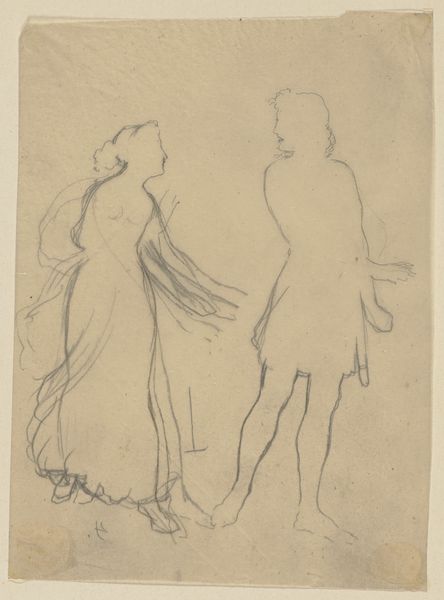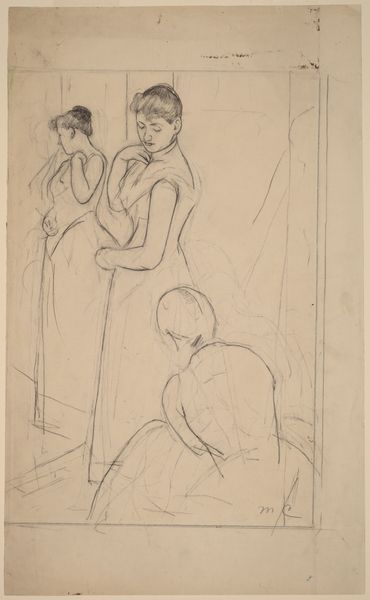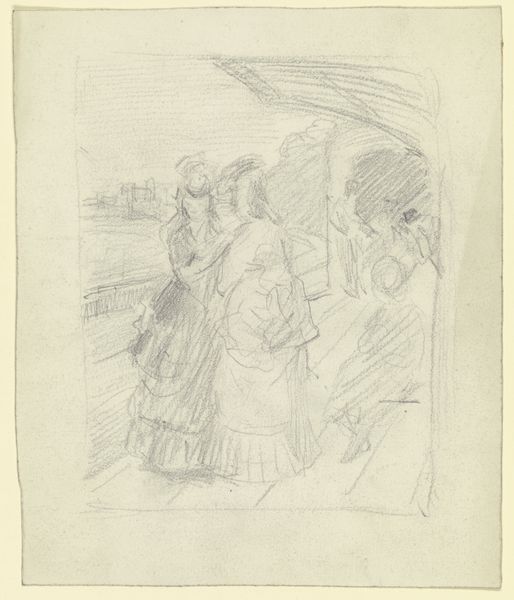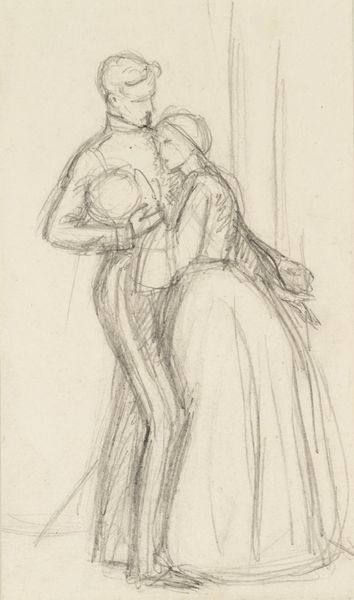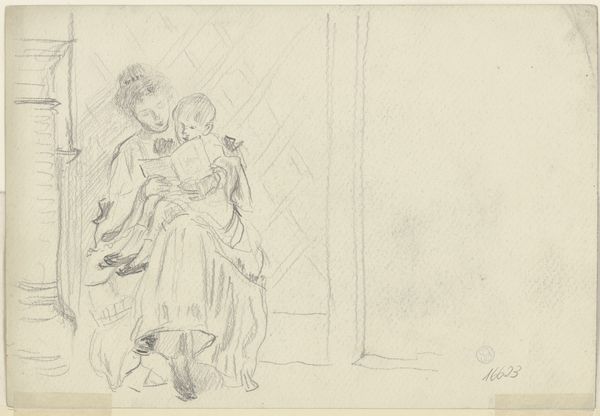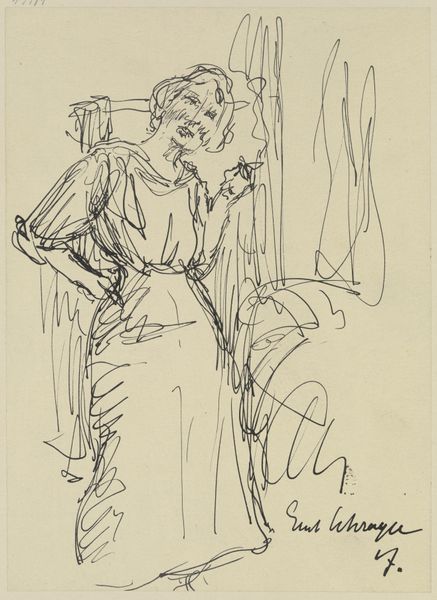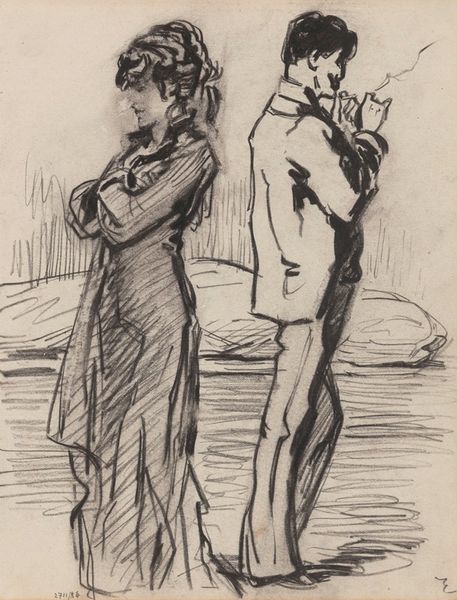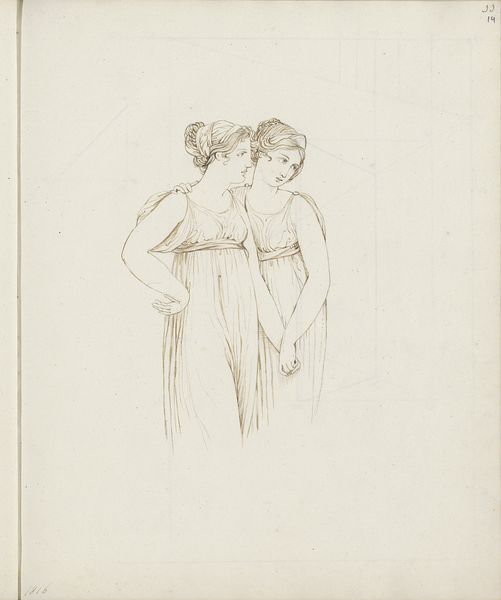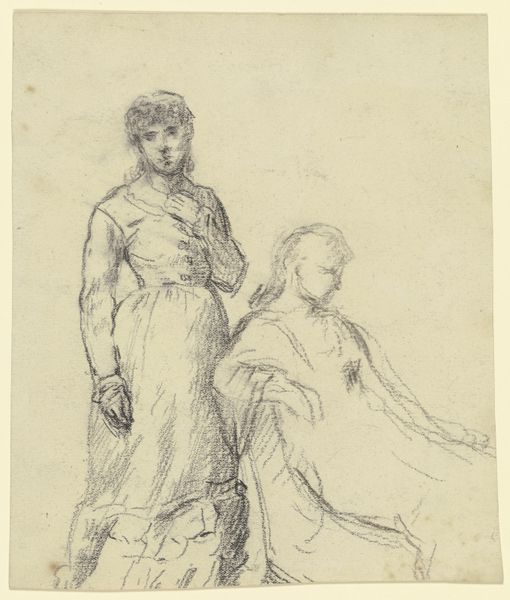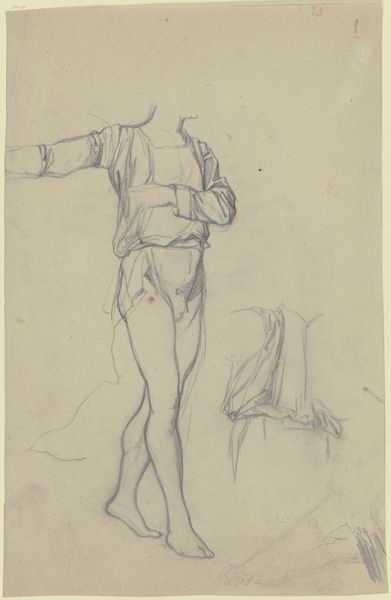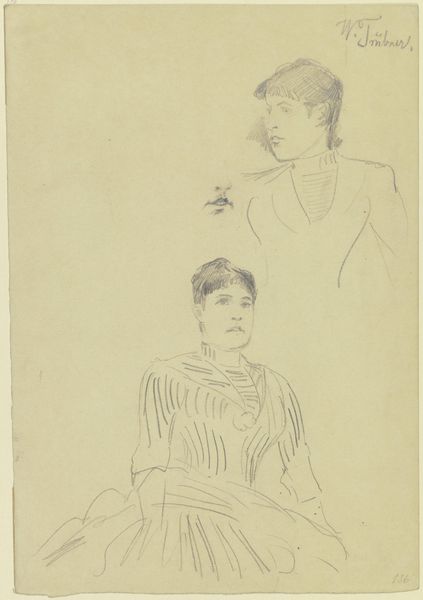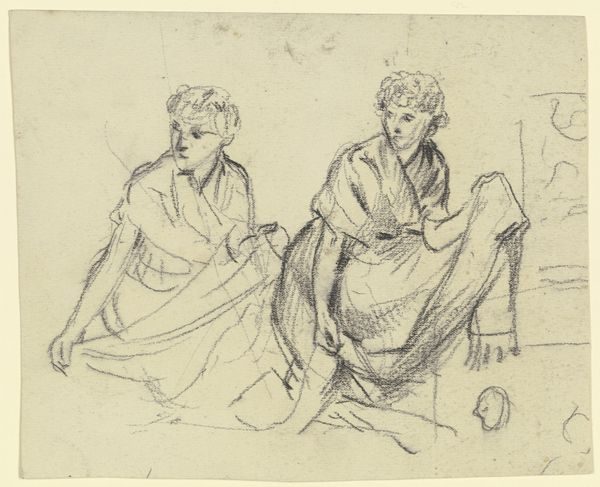
Dimensions: height 178 mm, width 125 mm
Copyright: Rijks Museum: Open Domain
Curator: Look closely at this drawing here in the Rijksmuseum: Isaac Israels' "Young Woman at a Milliner's". Dating sometime between 1878 and 1934, it offers a glimpse into a fitting room. Editor: My immediate reaction is one of fragmented immediacy; it's not a polished, finished thing but raw and energetic, captured quickly with lines that build up to suggest volume and light. The negative space seems just as important as the marks on the page. Curator: Exactly. Israels, of course, moved in Impressionist circles. This kind of rapid pen and ink work mirrors how that movement embraced spontaneity. Notice how the milliner seems to almost blend with the woman. There’s a protective feeling there, perhaps a ritual of transformation. It certainly reminds one of earlier depictions of goddesses attending to their devotees in preparation. Editor: I see the compositional echoes—how Israels builds form with what look like frantic, vibrating strokes. See the clear delineation versus almost chaotic accumulation? Note how it directs our gaze towards the central female figure's averted, slightly anxious gaze? I agree about the psychological atmosphere; a world is constructed economically and gesturally on paper. Curator: The hats on the nearby table and mirror offer more context as symbols too. Hats possess significant semiotic value as markers of status and occupation but are used to denote particular emotional states or values ascribed to women. Could there be a narrative inscribed into these figures beyond the scene, one of ambition and even entrapment? Editor: Or perhaps simply transformation? I can concede that in art and design the mirror functions as both a signifier of surface beauty and of truth, and the hat is not simply an accessory but an emblem of status, a construct worn to project an aspirational identity, but look again—everything we think we can be so sure about seems destabilized, rendered permeable with ink bleed and hastily overwritten lines. Perhaps he wanted to show the artificiality of everything we imbue with significance? Curator: Perhaps...and, the magic of this art then resides within that indeterminacy. Israels provides the viewer access to a dynamic space open to a whole variety of projected meanings across culture. Editor: The image invites interpretation because of what remains unsaid and, crucially, unseen: so much exists as pure suggestion!
Comments
No comments
Be the first to comment and join the conversation on the ultimate creative platform.
